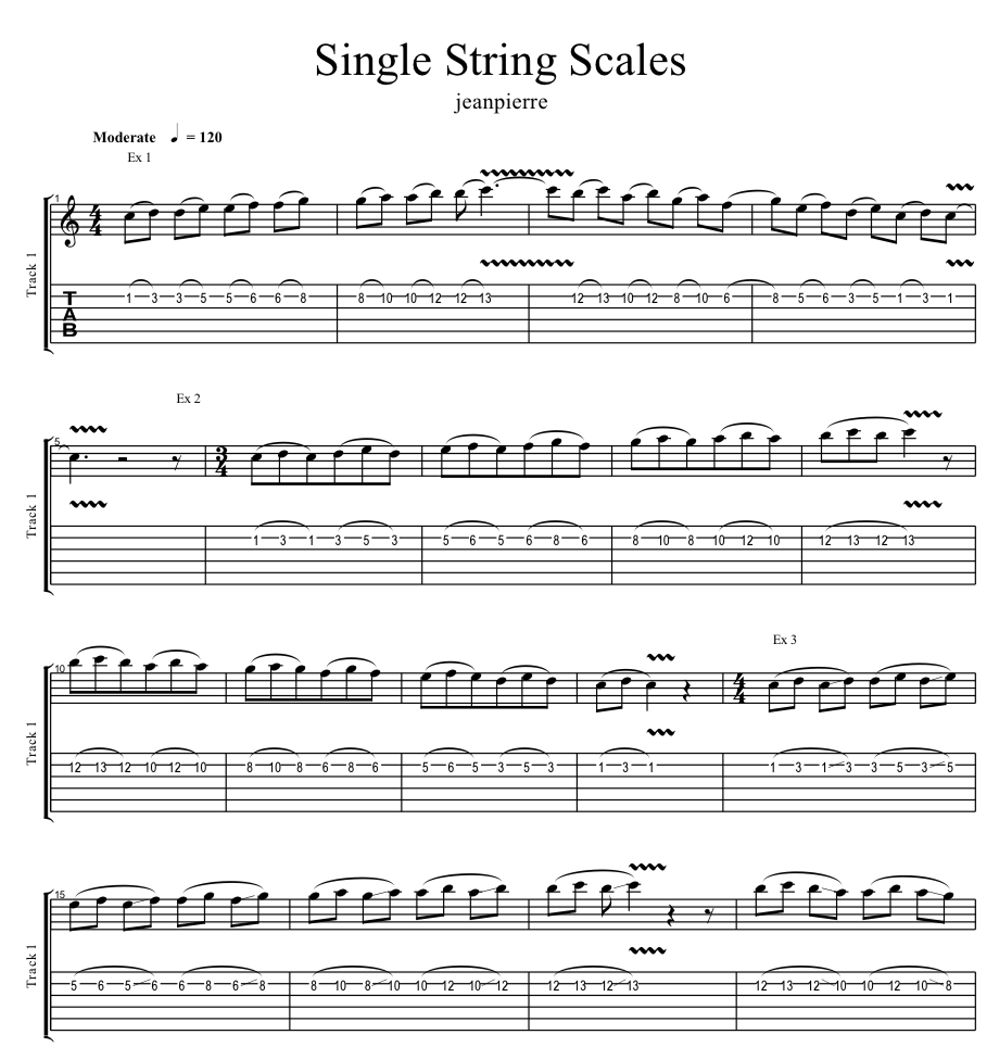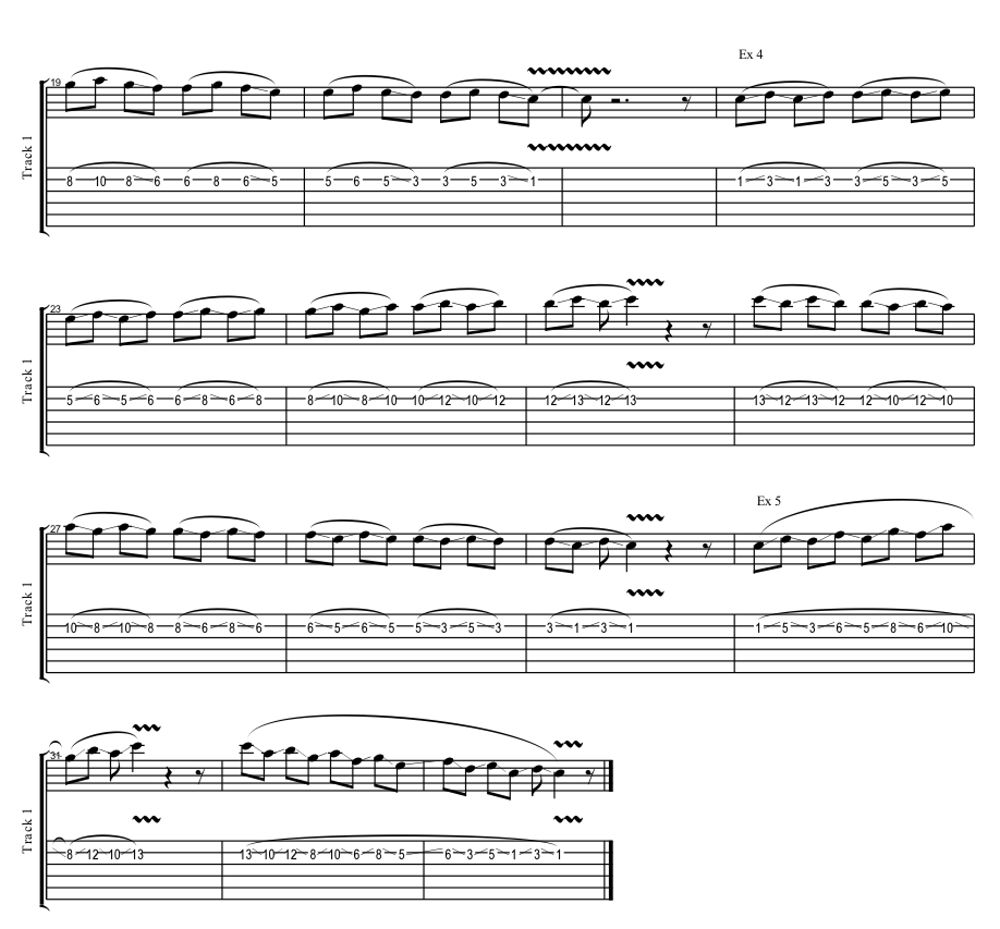Many books and articles have been written down the years about scales but few are innovative and many finish to be tedious. Today I will show you a manner of practicing scales in an interesting and systematic way. We'll be using single strings only.
For this lesson we'll focus only on the Major scale but next time we'll go into modes and pentatonics. As maybe you already know the formula to create all Major scales is WWHWWWH or written as TTSTTTS. W = whole step H = half step T = tone S = semitone. For our purpose we start with the note C. So working out the formula these notes will result CDEFGABC. That's called C Major.
Now let's go on the 2nd string which is B. The 1st fret on that string is C. So from there we'll build up our scale i.e. C Major. Go all the way up till the 13th fret just finding the notes. Now go back and use this format of notes C-D D-E E-F F-G G-A A-B B-C using these techniques one at a time... alternate picking, hammer ons, hammers and pulls, slides and hammers pulls slides together. To facilitate your playing especially with your fretting hand use fingers 1 and 3 when you have a tone distance and use 1 and 2 when you have a semitone. Do not use the 4th finger for this study. In this case it will only slow you down. But be sure to keep to the suggested fret hand fingers and not cheat! That would be defeating the purpose.
When hammering pick only the first note of the two i.e. C hammer to D then D and hammer to E etc. Same thing goes when you'll hammer and pull. But when you use slides and hammers pulls slides together be sure to pick only the first note to ascend and descend. It's important to do this so that your playing will sound legato and tight. Use only downstrokes. Alternate picking slows down legato playing. But be sure to alternate pick when it comes to execute scale with picking.
When you memorize the techniques and the notes of the one octave C Major keep going up in the scale until your neck ends and then down. Do this for sometime then go on another string and find the C note. Apply all the stuff you did on the 2nd string using the same principals. Be sure to use all the notes of that string up and down. So if for example you start C Major on the 4th string be sure to start from the 10th fret go up till the 22nd fret then back to the 2nd to finish on the 10th. Like this you'll be learning all the notes of C Major all around the neck. In future lessons I will teach you how to mix everything together to create incredible runs and leads!
When you're certain that you know very well C Major on all strings all over the fret board go back to the formula and use the G note and bring out G Major. The only difference between C and G Major scales is one note. C has an F and G has an F#. So by doing this you'll realize that you already know six notes of the new scale! Use all the techniques and system taught earlier. You will see that in few days you'll start to master the Major scales all around the neck plus learning loads of techniques that will sound great only on single strings. It is very important to remember that you will be learning all the 12 chromatic notes all over the neck in a very interesting manner and in a small span of time. Use the cycle of fifths (or circle of fifths) to find the next scale to learn after C and G. You'll be surprised that your playing will go to new heights as you hang in there and learn scales this manner. Try it and you'll see.


Jean-Pierre Zammit is a guitarist and instructor from Malta who has been playing guitar since the age of 14.
Zammit uses complex techniques, time shifts and scales in his writing, and always puts the song and the message he wants to portray first.
His is endorsed by Music Man guitars to use their Axis BFR models and Ernie Ball strings.